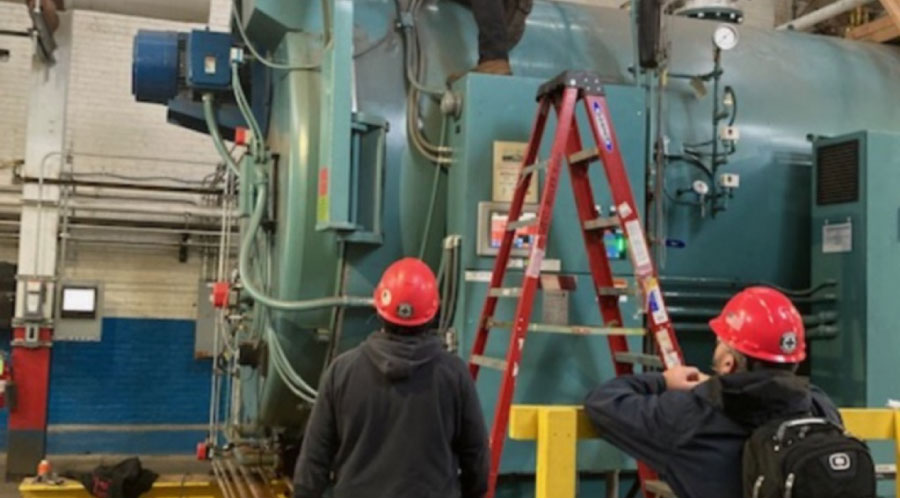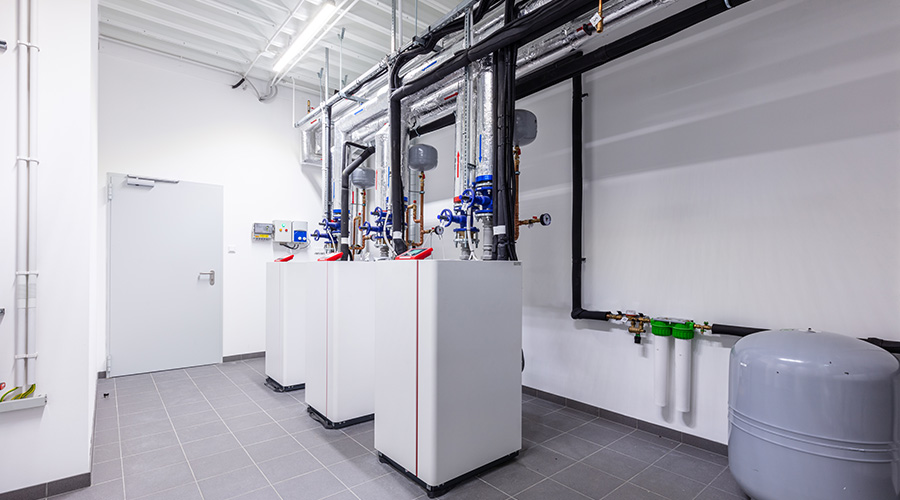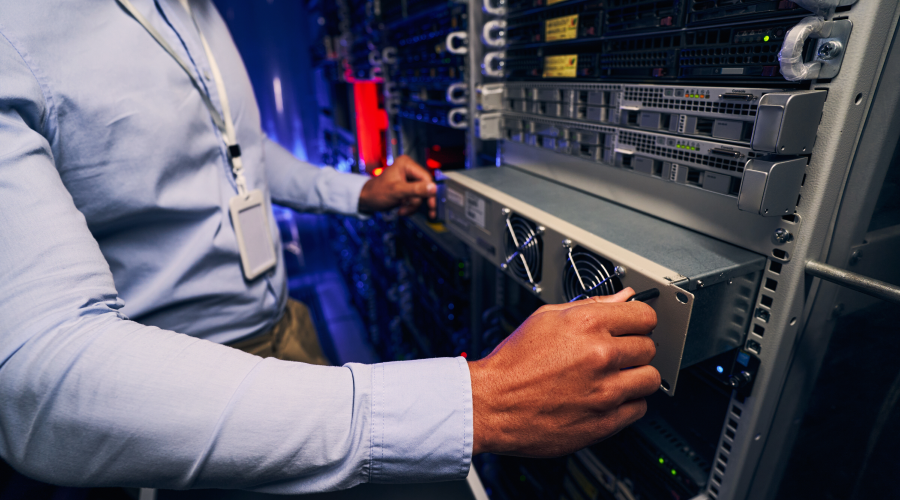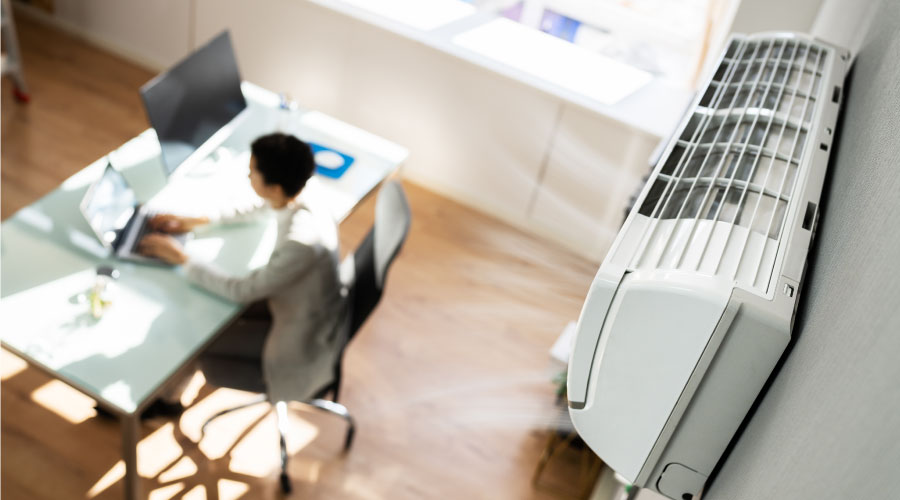Quick Fixes for Changing Needs
When extra cooling or heating capacity is needed for a short time, Renting HVAC equipment can be cost effective
No matter how well facilities are planned and operated, there will come a time when additional building HVAC equipment, such as chillers, cooling towers, boilers and portable cooling units, is necessary. Special events can place demands on HVAC systems that cannot be met by the existing equipment of the facility’s HVAC infrastructure. Equipment may have to be taken off-line for routine maintenance while the facility continues to operate at full capacity. And despite the high reliability of HVAC equipment, there are still failures that can shut down service to all or part of the facility.
When these and other similar events occur, facility executives have three basic options. They can curtail loads to the point that the existing HVAC systems can meet the load; they can make permanent changes to the building’s HVAC systems; or they can make temporary changes for the duration of the event or until the facility can return to its normal operation.
Although curtailment can be used effectively in certain applications to reduce building loads, it brings with it a reduction in service provided to the facility. As a result, curtailment cannot be effectively used in all situations. That leaves facility executives the option of making permanent or temporary changes to the building’s HVAC equipment.
Permanent changes to increase capacity or to provide system redundancy are expensive and may not always be possible. Space must be dedicated to support the additional equipment. New equipment must be purchased and installed. Changes must be made to the existing systems to support the new equipment properly. If the load requirements are temporary, it is difficult to justify the cost of permanent changes.
Facility executives also have the option of renting HVAC equipment to meet temporary needs. Renting was seldom considered to be advisable in the past because rental equipment was considered to be second-rate. The equipment had been abused, was not properly maintained and in many cases was obsolete. Today, however, HVAC equipment rental has a legitimate place in building operations.
Rent or Buy
In the past, when facilities needed additional HVAC capacity, even on a temporary basis, the organization simply bought the equipment, whether it was portable cooling units, chillers, cooling towers or boilers. Often the purchase was justified on the basis that if the equipment was needed once, it would be needed again, and the facility would have it on hand.
In today’s uncertain economy, facility executives are restricting equipment purchases, opting instead to rent. Economic realities have helped to remove the old stigma associated with renting. As a result, the rental industry has expanded exponentially.
While the decision to rent rather than purchase is based on factors specific to the application, a rule of thumb is that renting HVAC equipment is cost effective if the equipment is required for one month or less per year. At an average monthly rental of 3 to 4 percent of the total purchase cost for the equipment, short-term use requirements can be met very cost effectively by renting equipment.
Rental Advantages
Renting equipment instead of purchasing frees up capital that the organization can use for other purposes. If the equipment is needed for a special event or program, the equipment rental charges can be applied directly to that event or program, reducing the level of hidden financial support carried by the facility.
Renting also provides tax advantages. For example, rental charges are deductible as expenses from the organization’s income. Rental charges are typically higher than the allowable depreciation rate on purchased equipment, further reducing the organization’s tax burden.
Renting can also offer significant advantages over the cost of ownership. For one thing, there are no ownership costs accrued while the equipment sits idle. When equipment is owned, the facility is responsible for performing all maintenance on the item. Frequently used parts must be stocked and carried as overhead. If the equipment is rented, all maintenance costs are the responsibility of the rental company. This is a particularly important factor for equipment that is used infrequently. And because maintenance costs are the responsibility of the rental company, only one invoice must be processed. There are no invoices for service calls or spare parts, so overhead costs are reduced.
There also are no disposal costs associated with rental equipment. When there is no longer a need for the equipment, the rental company simply picks up the unit. If the facility is considering eventually purchasing the equipment, it may have the ability to rent with an option to buy. Although that arrangement generally applies to longer-term rentals, it is a choice that should be considered. With most plans allowing more than 90 percent of the cost of the rental to be applied to the purchase cost, renting with the option to buy can significantly reduce the cost of equipment ownership.
There are also operational advantages to renting. HVAC units often have a long lead time when purchased. It can take weeks or months to obtain the right piece of equipment to match the conditions in the facility. In contrast, rental equipment is generally available for delivery in hours or days.
Renting equipment also helps to avoid obsolescence. HVAC equipment generally has a long service life. For equipment that is seldom used and properly maintained, the actual service life of a particular piece of equipment often exceeds the average service life for that type of equipment. With advances in technology rapidly being absorbed into HVAC equipment, purchasing equipment that will be used only sparingly puts the facility at risk of having that equipment become obsolete before it needs to be replaced.
Avoiding Pitfalls
Renting equipment does have its disadvantages. Equipment must be paid for each time it is rented, and it is available only over the span of the rental agreement. Therefore, any use of rental equipment must be carefully planned.
Larger building systems will also require significant setup and teardown and may require modifications to existing building systems. Consider the temporary installation of a chiller or cooling tower. Temporary electrical service will have to be run to the equipment. Connections to building chilled or condenser water will have to be made. The cost of making these connections as well as the time that they will require must be taken into consideration when evaluating renting or purchasing options.
If the decision is made to rent HVAC equipment, facility executives should evaluate a range of factors in selecting a rental partner. Identify what pre- and post-rental services are offered by the rental company and if there are additional charges for those services. Does the company arrange and pay for delivery and pickup of the equipment? Is engineering assistance available to help with connecting the rented equipment to the existing building systems? What type of maintenance support does the rental company offer, and what is its guaranteed response time? Is the equipment maintained by the rental company’s staff or is maintenance contracted out to a service company?
Another factor that should be considered when evaluating HVAC equipment rental companies is where the inventory of equipment is located. For small items, most companies stock equipment locally. For larger items, such as building chillers and cooling towers, equipment is typically stocked at regional distribution centers. Depending on where those centers are located, the time and cost to deliver equipment may become excessive.
Equipment Quality
Finally, facility executives should review the policy of the rental company with regard to replacing and updating equipment. In the past, it was not uncommon to find that companies were willing to rent out practically any age equipment as long as it was still operating. As could be expected, the older the equipment, the less reliable it was. Less reliable operation resulted in more frequent breakdowns and more service calls.
Today, most rental companies tend to keep equipment in operation for a period of time well short of its rated service life. That approach reduces operating costs while allowing the companies to provide the most advanced equipment possible. For the facility executive, the result is greater reliability.
Renting HVAC equipment isn’t for every situation. But renting for the right application can reduce capital requirements and operating costs while allowing facility executives to more effectively meet the needs of building occupants.
James Piper, PhD, PE, is a writer and consultant who has more than 25 years of experience in facilities management. He is a contributing editor for Building Operating Management.
Related Topics:











